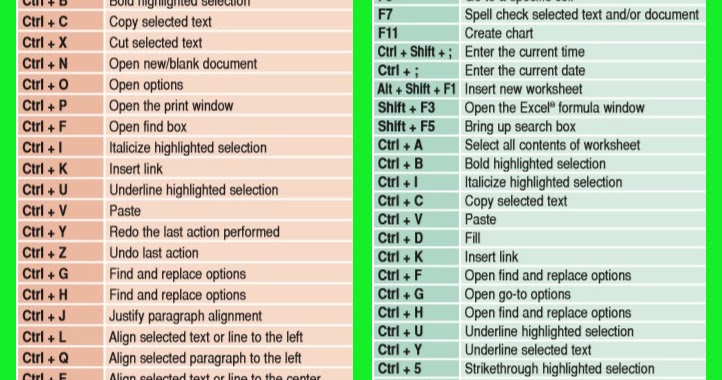


Open the Design tab to use themes, colors, and effects, such as page borders. Open the Insert tab to insert tables, pictures and shapes, headers, or text boxes. Open the Home tab to use common formatting commands, paragraph styles, and the Find tool. Open the File page to use Backstage view. Move to the Tell Me or Search field on the Ribbon to search for assistance or Help content. Additional tabs might appear depending on your selection in the document. To go directly to a tab on the ribbon, press one of the following access keys. If you don't know the sequence, press Esc and use Key Tips instead. If you know the entire key sequence, go ahead and use it. A notification pops up saying you're using an access key from an earlier version of Microsoft Office. For example, press Alt, and then press one of the old menu keys E (Edit), V (View), I (Insert), and so on.
KEYSTROKES MEANING FULL
However, you need to know the full shortcut. In Office 2013 and Office 2010, most of the old Alt key menu shortcuts still work, too. Both offer a largely similar experience, but some options and search results can vary. Press Alt again to see Key Tips for the options for the selected tab.ĭepending on the version of Office you are using, the Search text field at the top of the app window might be called Tell Me instead. For example, press Alt+H to open the Home tab, and Alt+Q to move to the Tell Me or Search field. You can combine the Key Tips letters with the Alt key to make shortcuts called Access Keys for the ribbon options. Note: Add-ins and other programs can add new tabs to the ribbon and might provide access keys for those tabs. Press the Alt key to display the ribbon shortcuts, called Key Tips, as letters in small images next to the tabs and options as shown in the image below. For example, on the Home tab, the Font group includes the Font Color option. The ribbon groups related options on tabs. Use the arrow keys to select Close, and then press Enter. Press F6 until the task pane is selected. This table shows the most frequently used shortcuts in Microsoft Word.Ĭut the selected content to the Clipboard.Ĭopy the selected content to the Clipboard.Īlt+W, Q, then use the Tab key in the Zoom dialog box to go to the value you want. Work with references, citations, and indexing
KEYSTROKES MEANING WINDOWS
Get these keyboard shortcuts in a Word document at this link: Word 2016 for Windows keyboard shortcuts. For more information about the features available in Word Starter, see Word Starter feature support. If you are using Microsoft Word Starter, be aware that not all the features listed for Word are supported in Word Starter. If an action that you use often does not have a shortcut key, you can record a macro to create one. Press Ctrl+F, and then type your search words. OED says this use "appears to be confined to Eng." First of organs and pianos, by 1765 of wind instruments transferred to telegraphy by 1837 and later to typewriters (1876).To quickly find a shortcut in this article, you can use Search. 1500, probably also suggested by uses of clavis. Sense of "mechanism on a musical instrument operated by the player's fingers" is from c. to "sum of the melodic and harmonic relationships in the tones of a scale," also "melodic and harmonic relationships centering on a given tone." Probably this is based on a translation of Latin clavis "key," used by Guido for "lowest tone of a scale," or French clef (see clef also see keynote). In music theory, the sense developed 17c. The musical sense originally was "tone, note" (mid-15c.).

Meaning "explanation of a solution" (to a set problem, code, etc.) is from c.1600. 1700 earlier and in Middle English it often was pronounced "kay." Meaning "that which holds together other parts" is from 1520s. Modern pronunciation is a northern variant predominating from c. But Liberman writes, "The original meaning of *kaig-jo- was presumably '*pin with a twisted end.' Words with the root *kai- followed by a consonant meaning 'crooked, bent twisted' are common only in the North Germanic languages." Compare also Sanskrit kuncika- "key," from kunc- "make crooked." Perhaps it is related to Middle Low German keie "lance, spear" on notion of "tool to cleave with," from Proto-Germanic *ki- "to cleave, split" (cognates: German Keil "wedge," Gothic us-kijans "come forth," said of seed sprouts, keinan "to germinate"). "instrument for opening locks," Middle English keie, from Old English cæg "metal piece that works a lock, key" literal and figurative ("solution, explanation, one who or that which opens the way or explains"), a word of unknown origin, abnormal evolution, and no sure cognates other than Old Frisian kei.


 0 kommentar(er)
0 kommentar(er)
